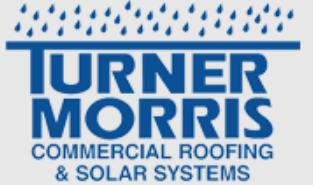Title Page
-
Document No.
-
Audit Title
-
Client / Site
-
Conducted on
-
Prepared by
-
Location
-
Personnel
Job site and/or scope of work
-
Add media
Safety Plan
-
Written Safety Plan on site?
-
Safety plan well thought out, effective for eliminating/mitigating all site hazards, and signed by every worker on the site?
Fall Protection 1926.502(a)(2) Employers shall provide and install all fall protection systems required by this subpart for an employee, and shall comply with all other pertinent requirements of this subpart before that employee begins the work that necessitates the fall protection. 1926.501(b)(10) "Roofing work on Low-slope roofs:" Except as otherwise provided in paragraph (b) of this section, each employee engaged in roofing activities on low-slope roofs, with unprotected sides and edges 6 feet (1.8 m) or more above lower levels shall be protected from falling by guardrail systems, safety net systems, personal fall arrest systems, or a combination of warning line system and guardrail system, warning line system and safety net system, or warning line system and personal fall arrest system, or warning line system and safety monitoring system. Or, on roofs 50-feet (15.25 m) or less in width (see Appendix A to subpart M of this part), the use of a safety monitoring system alone [i.e. without the warning line system] is permitted. 1926.501(b)(11) "Steep roofs." Each employee on a steep roof with unprotected sides and edges 6 feet (1.8 m) or more above lower levels shall be protected from falling by guardrail systems with toeboards, safety net systems, or personal fall arrest systems.
-
Personal Fall Arrest System(s) in use? 1926.502(d) "Personal fall arrest systems." Personal fall arrest systems and their use shall comply with the provisions set forth below:
-
1926.502(d)(21) "Personal fall arrest systems shall be inspected prior to each use for wear, damage and other deterioration, and defective components shall be removed from service."<br>1926.502(d)(16) "Personal fall arrest systems, when stopping a fall, shall: <br>1926.502(d)(16)(ii) "limit maximum arresting force on an employee to 1,800 pounds (8 kN) when used with a body harness; <br>1926.502(d)(16)(iii) "be rigged such that an employee can neither free fall more than 6 feet (1.8 m), nor contact any lower level;<br>1926.502(d)(16)(iv) "bring an employee to a complete stop and limit maximum deceleration distance an employee travels to 3.5 feet (1.07 m); and, <br>1926.502(d)(16)(v) "Have sufficient strength to withstand twice the potential impact energy of an employee free falling a distance of 6 feet (1.8 m), or the free fall distance permitted by the system, whichever is less."<br>1926.502(d)(17) "The attachment point of the body harness shall be located in the center of the wearer's back near shoulder level, or above the wearer's head."<br>1926.502(d)(9) Lanyards and vertical lifelines shall have a minimum breaking strength of 5,000 pounds (22.2 kN).
-
1926.502(d)(15) "Anchorages used for attachment of personal fall arrest equipment shall be independent of any anchorage being used to support or suspend platforms and capable of supporting at least 5,000 pounds (22.2 kN) per employee attached, or shall be designed, installed, and used as follows: 1926.502(d)(15)(i) as part of a complete personal fall arrest system which maintains a safety factor of at least two; and<br>1926.502(d)(15)(ii) under the supervision of a qualified person."
-
Self Retracting Lifeline(s) in use?
-
1926.502(d)(11) Lifelines shall be protected against being cut or abraded.<br>1926.502(d)(12) Self-retracting lifelines and lanyards which automatically limit free fall distance to 2 feet (0.61 m) or less shall be capable of sustaining a minimum tensile load of 3,000 pounds (13.3 kN) applied to the device with the lifeline or lanyard in the fully extended position.<br>1926.502(d)(13)<br>Self-retracting lifelines and lanyards which do not limit free fall distance to 2 feet (0.61 m) or less, ripstitch lanyards, and tearing and deforming lanyards shall be capable of sustaining a minimum tensile load of 5,000 pounds (22.2 kN) applied to the device with the lifeline or lanyard in the fully extended position.
-
Horizontal Life-Line(s) in use?
-
1926.502(d)(8) "Horizontal lifelines shall be designed, installed, and used, under the supervision of a qualified person, as part of a complete personal fall arrest system, which maintains a safety factor of at least two." (5000 lbs./worker attached)
-
Guardrails in use? 1926.502(b) "Guardrail systems." Guardrail systems and their use shall comply with the following provisions:
-
Rails are complete along fall hazard?
-
1926.502(b)(3) Guardrail systems shall be capable of withstanding, without failure, a force of at least 200 pounds (890 N) applied within 2 inches (5.1 cm) of the top edge, in any outward or downward direction, at any point along the top edge.<br>1926.502(b)(4) When the 200 pound (890 N) test load specified in paragraph (b)(3) of this section is applied in a downward direction, the top edge of the guardrail shall not deflect to a height less than 39 inches (1.0 m) above the walking/working level.
-
1926.502(b)(1) Top edge height of top rails, or equivalent guardrail system members, shall be 42 inches (1.1 m) plus or minus 3 inches (8 cm) above the walking/working level. When conditions warrant, the height of the top edge may exceed the 45-inch height, provided the guardrail system meets all other criteria of this paragraph.
-
1926.502(b)(2) Midrails, screens, mesh, intermediate vertical members, or equivalent intermediate structural members shall be installed between the top edge of the guardrail system and the walking/working surface when there is no wall or parapet wall at least 21 inches (53 cm) high.<br>1926.502(b)(2)(i) Midrails, when used, shall be installed at a height midway between the top edge of the guardrail system and the walking/working level.
-
1926.502(j) "Protection from falling objects." Falling object protection shall comply with the following provisions:<br>1926.502(j)(1) Toeboards, when used as falling object protection, shall be erected along the edge of the overhead walking/working surface for a distance sufficient to protect employees below.<br>1926.502(j)(2) Toeboards shall be capable of withstanding, without failure, a force of at least 50 pounds (222 N) applied in any downward or outward direction at any point along the toeboard.<br>1926.502(j)(3) Toeboards shall be a minimum of 3 1/2 inches (9 cm) in vertical height from their top edge to the level of the walking/working surface. They shall have not more than 1/4 inch (0.6 cm) clearance above the walking/working surface. They shall be solid or have openings not over 1 inch (2.5 cm) in greatest dimension.<br>1926.502(j)(4) Where tools, equipment, or materials are piled higher than the top edge of a toeboard, paneling or screening shall be erected from the walking/working surface or toeboard to the top of a guardrail system's top rail or midrail, for a distance sufficient to protect employees below.
-
Warning lines in use? 1926.502(f) "Warning line systems." Warning line systems [See 1926.501(b)(10)] and their use shall comply with the following provisions:
-
1926.502(f)(1) The warning line shall be erected around all sides of the roof work area.
-
1926.502(f)(1)(i) When mechanical equipment is not being used, the warning line shall be erected not less than 6 feet (1.8 m) from the roof edge.<br>1926.502(f)(1)(ii) When mechanical equipment is being used, the warning line shall be erected not less than 6 feet (1.8 m) from the roof edge which is parallel to the direction of mechanical equipment operation, and not less than 10 feet (3.1 m) from the roof edge which is perpendicular to the direction of mechanical equipment operation.
-
1926.502(f)(1)(iii) Points of access, materials handling areas, storage areas, and hoisting areas shall be connected to the work area by an access path formed by two warning lines.<br>1926.502(f)(1)(iv) When the path to a point of access is not in use, a rope, wire, chain, or other barricade, equivalent in strength and height to the warning line, shall be placed across the path at the point where the path intersects the warning line erected around the work area, or the path shall be offset such that a person cannot walk directly into the work area.
-
1926.502(f)(2) Warning lines shall consist of ropes, wires, or chains, and supporting stanchions erected as follows:<br>1926.502(f)(2)(i) The rope, wire, or chain shall be flagged at not more than 6-foot (1.8 m) intervals with high-visibility material;<br>1926.502(f)(2)(ii) The rope, wire, or chain shall be rigged and supported in such a way that its lowest point (including sag) is no less than 34 inches (.9 m) from the walking/working surface and its highest point is no more than 39 inches (1.0 m) from the walking/working surface;
-
1926.502(f)(2)(iii) After being erected, with the rope, wire, or chain attached, stanchions shall be capable of resisting, without tipping over, a force of at least 16 pounds (71 N) applied horizontally against the stanchion, 30 inches (.8 m) above the walking/working surface, perpendicular to the warning line, and in the direction of the floor, roof, or platform edge;
-
1926.502(f)(2)(iv) The rope, wire, or chain shall have a minimum tensile strength of 500 pounds (2.22 kN), and after being attached to the stanchions, shall be capable of supporting, without breaking, the loads applied to the stanchions as prescribed in paragraph (f)(2)(iii) of this section; and
-
Safety monitor in use? 1926.502(h) "Safety monitoring systems." Safety monitoring systems [See 1926.501(b)(10) and 1926.502(k)] and their use shall comply with the following provisions:
-
1926.502(h)(1)(i) The safety monitor shall be competent to recognize fall hazards;
-
1926.502(h)(1)(iii) The safety monitor shall be on the same walking/working surface and within visual sighting distance of the employee being monitored;<br>1926.502(h)(1)(iv) The safety monitor shall be close enough to communicate orally with the employee;
-
1926.502(h)(1)(ii) The safety monitor shall warn the employee when it appears that the employee is unaware of a fall hazard or is acting in an unsafe manner;
-
1926.502(h)(1)(v) The safety monitor shall not have other responsibilities which could take the monitor's attention from the monitoring function.
-
1926.501(b)(10) If no warning lines are in place but a safety monitor is being used, is the roof 50 feet or less in width?
-
Parapet walls in use?
-
Parapet Walls at least 39" high?
Ladders
-
Ladders on site?
-
Is the Ladder properly secured to prevent displacement?
-
1926.1053(b)(1)<br>When portable ladders are used for access to an upper landing surface, the ladder side rails shall extend at least 3 feet (.9 m) above the upper landing surface to which the ladder is used to gain access; or, when such an extension is not possible because of the ladder's length, then the ladder shall be secured at its top to a rigid support that will not deflect, and a grasping device, such as a grabrail, shall be provided to assist employees in mounting and dismounting the ladder. In no case shall the extension be such that ladder deflection under a load would, by itself, cause the ladder to slip off its support.
-
Ladders appropriate duty rating for the task?
-
For construction operations, all ladders should be either Type 1, Type 1A, or Type 1AA
Ladder Type Rated Capacity Duty Rating Description:
Type IAA Ladder 375 lb. Extra-heavy-duty industrial ladder
Type IA Ladder 300 lb Heavy-duty industrial ladder
Type I Ladder 250 lb Heavy-duty industrial ladder
Type II Ladder 225 lb Medium-duty commercial ladder
Type III Ladder 200 lb Light-duty household ladder -
1926.1053(b)(15) Ladders shall be inspected by a competent person for visible defects on a periodic basis and after any occurrence that could affect their safe use.<br>1926.1053(b)(16) Portable ladders with structural defects, such as, but not limited to, broken or missing rungs, cleats, or steps, broken or split rails, corroded components, or other faulty or defective components, shall either be immediately marked in a manner that readily identifies them as defective, or be tagged with "Do Not Use" or similar language, and shall be withdrawn from service until repaired.<br>1926.1053(b)(2) Ladders shall be maintained free of oil, grease, and other slipping hazards.
-
1926.1053(b)(5)(i)<br>Non-self-supporting ladders shall be used at an angle such that the horizontal distance from the top support to the foot of the ladder is approximately one-quarter of the working length of the ladder (the distance along the ladder between the foot and the top support).
-
1926.1053(b)(6) Ladders shall be used only on stable and level surfaces unless secured to prevent accidental displacement.<br>1926.1053(b)(7) Ladders shall not be used on slippery surfaces unless secured or provided with slip-resistant feet to prevent accidental displacement. Slip-resistant feet shall not be used as a substitute for care in placing, lashing, or holding a ladder that is used upon slippery surfaces including, but not limited to, flat metal or concrete surfaces that are constructed so they cannot be prevented from becoming slippery.<br>1926.1053(b)(8) Ladders placed in any location where they can be displaced by workplace activities or traffic, such as in passageways, doorways, or driveways, shall be secured to prevent accidental displacement, or a barricade shall be used to keep the activities or traffic away from the ladder.<br>1926.1053(b)(9) The area around the top and bottom of ladders shall be kept clear.
HAZCOM
-
Chemicals on site?
-
1910.1200(g)(1) Employers shall have a safety data sheet in the workplace for each hazardous chemical which they use.
-
1910.1200(f)(6) The employer shall ensure that each container of hazardous chemicals in the workplace is labeled, tagged or marked with either:<br>1910.1200(f)(6)(ii) Product identifier and words, pictures, symbols, or combination thereof, which provide at least general information regarding the hazards of the chemicals, and which, in conjunction with the other information immediately available to employees under the hazard communication program, will provide employees with the specific information regarding the physical and health hazards of the hazardous chemical.
-
Chemicals properly stored?
-
Employees properly protected from the hazards of the chemical(s) in use?
General Safety
-
First aid kits available and stocked? (OSHA 1910.266): Gauze pads (at least 4 x 4 inches); Two large gauze pads (at least 8 x 10 inches); Box adhesive bandages (band-aids); One package gauze roller bandage at least 2 inches wide; Two triangular bandages; Wound cleaning agent such as sealed moistened towelettes; Scissors At least one blanket; Tweezers; Adhesive tape; Latex gloves; Resuscitation equipment such as resuscitation bag, airway, or pocket mask; Two elastic wraps; Splint; Directions for requesting emergency assistance.
-
1926.150(c)(1)(vi) A fire extinguisher, rated not less than 10B, shall be provided within 50 feet of wherever more than 5 gallons of flammable or combustible liquids or 5 pounds of flammable gas are being used on the jobsite.
-
1926.150(c)(1)(viii) Portable fire extinguishers shall be inspected periodically and maintained in accordance with Maintenance and Use of Portable Fire Extinguishers, NFPA No. 10A-1970. (Every 12 Months)
-
Is there warning signs and caution tape around the dumpster area?
-
Is there fall protection around the debris chute?
-
Floor holes guarded or provided with secure labeled covers?
-
Are skylights or other openings covered or otherwise guarded?
-
Excess debris minimized?
-
Trip hazards minimized?
-
1926.1051(a) A stairway or ladder shall be provided at all personnel points of access where there is a break in elevation of 19 inches (48 cm) or more, and no ramp, runway, sloped embankment, or personnel hoist is provided.
Personal Protective Equipment.
-
Eye Protection worn as required?
-
Eye Protections appears to meet ANSI Z87 requirements and is in serviceable condition?
-
High visibility clothing worn by every employee on the roof?
-
High visibility clothing appears to be in serviceable condition (clean, zipped up, etc.)?
-
Hard hats needed?
-
Hard Hats worn as required?
-
Hearing protection needed?
-
Hearing protection worn as required?
-
Noise monitoring assessments performed to determine worker exposure?
-
Noise monitoring should be performed to assess average noise exposures to workers over an 8-hour time-weighted average. Pinnacol Assurance can provide this service at no cost to you. To request noise monitoring or other safety and industrial hygiene services, please contact Pinnacol's Safety on Call line at 303-361-4700.
-
Respirators needed?
-
Respirators worn as Required?
-
Workers who wear filtering face piece respirators voluntarily have received Appendix D of OSHA's respiratory protection standard?
-
Workers who voluntarily wear filtering face piece respirators (dust masks) should be provided with a copy of the information below.
29 CFR 1910.134 - Appendix D (see in Safety Manual) -
Voluntary use respirators are NIOSH approved?
-
Other PPE Concerns/Hazards?
Tools/Equipment
-
Power tools in use/on site?
-
Power tools in serviceable condition?
-
Power tools properly guarded and free of damage?
-
Power tools either grounded or double insulated?
-
Electrical equipment in use or on site?
-
Temporary power GFCI protected?
-
Extension cords appear to be in serviceable condition?
-
Do all extension cords have three-prong plugs in place?
-
Other electrical concerns
Scaffolding
-
Scaffolding on site?
-
Firm footing, mud sills, and base plates in place.
-
Scaffold is plumb, square, and level.
-
Cross braces are complete.
-
Working levels are fully planked.
-
Planks either overlap support 6-12' or are cleated to restrain from sliding (6-18' if planks are over 10').
-
Plank deflection does not exceed 1/60 of the plank length, indicating overload. (1" deflection per 5" feet of plank length).
-
Planking in serviceable condition.
-
Front edge of platforms are no further than 14" from face of wall (18" for plastering operations).
-
Scaffold access and egress is provided and adequate.
-
If height is over 4 times the narrowest base dimension, scaffold is tied/braced to the wall.
-
Scaffolds with cantilevered work platforms are tied, braced, or out rigged to prevent tipping.
-
Cantilevered work platforms are used to support workers only and not to store/stage materials.
-
Fall Protection over 10 feet is provided via guardrails or PFASs.
-
Other scaffolding concerns?
Public Safety
-
Are pedestrians within range of hazards in the working area?
-
Proper care has been taken to ensure the safety of the public (Caution tape, warning lines, ground level safety monitor, "Danger/Warning" signs, etc.)?
Illustrations/further comments
-
Add media
-
Enter Text here
Sign Off
-
Add signature



















